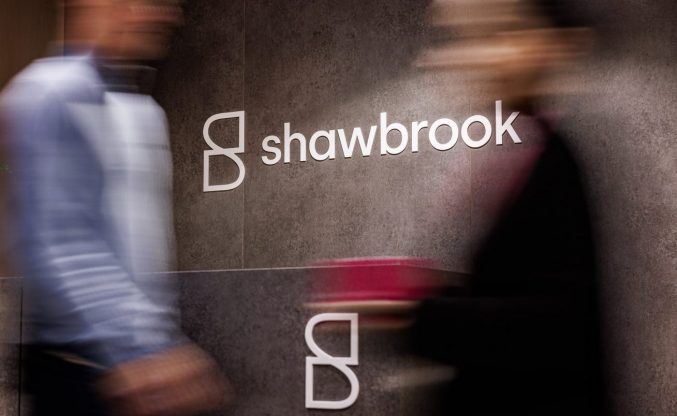Bridging sector breaks £5bn
By Bridging Loan Directory
The latest edition of the West One Bridging Index shows that gross annual bridging lending broke £5bn by the end of 2017, capping a strong year for the sector.
The UK’s bridging sector finished a strong 2017 with a powerful final quarter’s performance, yielding a new high of £5.0bn according to findings from West One’s Bridging Index. The year-end edition of the quarterly report revealed that gross annualized lending continued its upward trajectory from £4.7bn in Q3 to grow 6%, and be 24% above the same period in 2016.
The findings from this iteration of the Bridging Index provide further evidence that the bridging sector has had a robust 2017, in spite of a comparatively flat wider housing market and the first interest rate rise in 10 years. Indeed ASTL members lent over £1bn in the quarter during which the Bank of England implemented the +0.25% change in their base rate.
The higher volume of smaller-sized transactions that characterised the latter part of 2017 has continued through to the end of the year, as property investors look regionally for their returns.
Marie Grundy, pictured, Sales Director of West One, said:
“In 2017, bridging has turned out to be a ray of sunshine in the property finance world, with a series of record performances throughout the year. The industry shrugged off the headwinds buffeting other parts of the industry, to deliver a final lending total of £5bn for the year. At West One, our short-term lending grew with similar strength to a book of around £450m and record volumes of transactions in the year.
What’s perhaps most encouraging is to see a breakthrough in the diversity of that growth, with more and more opportunities being found regionally. Where I am, in the North West of England, places like Greater Manchester and Merseyside are increasingly vibrant cities that are benefitting from urban regeneration and moves away from London, like the BBC made a few years ago. That means that these, along with Birmingham and the East Midlands that are extended commutes from London, are attractive places to live. Opportunistic investors looking for better returns are finding them here, and bridging is well placed to help them capitalise on those.
Looking ahead, we remain confident in further growth of the bridging market not only through further regional expansion, but also as SME developers seek small project funding for housebuilding, to meet the Government’s new home targets. With many finding it hard to get funding for projects under £1m, or to finance property acquisition whilst planning permission is being obtained, bridging is well-placed to support them.”
Trends in the bridging market
Higher volumes of smaller transaction sizes have persisted throughout the second half of 2017. Average loan sizes remained between £600,000 and £800,000 in the quarter and confirming a longer-run average trending to below £800,000. Transaction volumes continue to be strong, however, resulting in total lending surging in the 4th quarter.
As discussed in previous editions, greater buoyancy in property markets outside London and the South East are offering property investors better rental yields and even some opportunities for capital appreciation at a time when the capital city is offering neither. With average property prices in London around £500,000 compared with regional averages often under half that number, inevitably sizes of loans secured on these properties will be lower. This appears to be a significant driver of this trend.
Wider property market analysis
HMRC property transactions data show that 2017 was a flat year for the residential property market in aggregate. Growth from 1,067,100 transactions in 2013 to 1,230,130 by 2016 has been followed by a (0.5%) flattening to 1,224,570 transactions in 2017. Non-residential has shown continued growth, albeit at 10% of the volume, from 104,510 in 2013 to 124,810 in 2016 and 127,990 last year.
For bridging, healthy transactions are critical for successful exits where the strategy is sale. A volume of transactions sustained above 100,000 per month is therefore a positive for the industry. Nevertheless, the market activity has undoubtedly been blunted as a result of Brexit uncertainty and softness in London and the South East. That has not succeeded in restraining the buoyancy of bridging, however.
RICS member survey data have also painted a subdued, though not disastrous picture of the residential market, with the key index of price expectations hovering close to neutrality for much of H2. Yet bridging has maintained its positive momentum. In part, this is because bridging can help opportunistic investors – either to snap up properties that are being placed on the market ‘to sell’, or to extend their sales window to ensure properties sell at a level that can provide sufficient returns on their investments.
Looking forward, modest but positive house price growth remains likely, albeit with regional hot spots. That is a simple function of supply and demand in the housing sector. In the short-term, reductions in supply are maintaining prices even with somewhat weaker demand. For example, RICS members in the South West of England have reported acute shortages of properties coming to market. In the longer-term, Government has made clear since February 2017’s Fixing our Broken Property Market white paper, that significantly more homes need to be built to relieve supply constraints. Even with possible changes in demand as a result of Brexit, a housing shortfall is likely to persist for some years in the future.
One particular growth opportunity for bridging in 2018 and beyond, is then providing funding for SME developers to help meet that new home supply challenge. Government has highlighted the challenges that SMEs have in securing funding for their small development projects and SME research suggests that this is the biggest single challenge for small developers.
Bridging is already filling some of this gap, as major renovations and conversion work of under £1m is bread and butter for quasi-development bridging funding. Moreover, bridging finance can prelude full-blown development finance when planning permission is yet to be granted, allowing SMEs to acquire sites before they qualify for development draw-downs.
Bridging lenders are therefore well-placed to support the SME developer community and indeed West One is launching development finance for small projects between £1,000,000 and £7,500,000 to take advantage of the interplay between bridging and development finance in the SME sector.
Bridging interest rates
Interest rates in Q4 remained stable at 1% per month, in spite of the Bank of England’s base rate rise on 2nd November. Not only had the market already begun to factor this shift in during Q3, but also healthy competition in the sector has continued, thereby holding rates steady.
This competitive intensity has been maintained by continued interest from new entrants, while well-funded players in the market have been able to maintain attractive rates. In turn, that has meant good value for borrowers, resulting in such a vibrant performance for the sector in Q4.
Danny Waters, CEO of Enra Group, said:
“The bridging sector has performed excellently in 2017, despite the backdrop of concern around the progress of Brexit negotiations, sluggish economic indicators and interest rate rises. Whilst a few lenders have notably taken 2017 as the time to exit bridging, we are generally seeing more competition in the sector, which both drives innovation and keeps pricing attractive for customers. That continuing adaptation to conditions and to borrowers’ needs has been a key strength for the sector in the decade since the financial crisis. Providing the flexible funding options that property professionals need, especially small developers, is the key to bridging continuing its growth trajectory, however the Brexit negotiations and the wider economy progress.”














You must be logged in to post a comment.